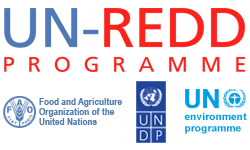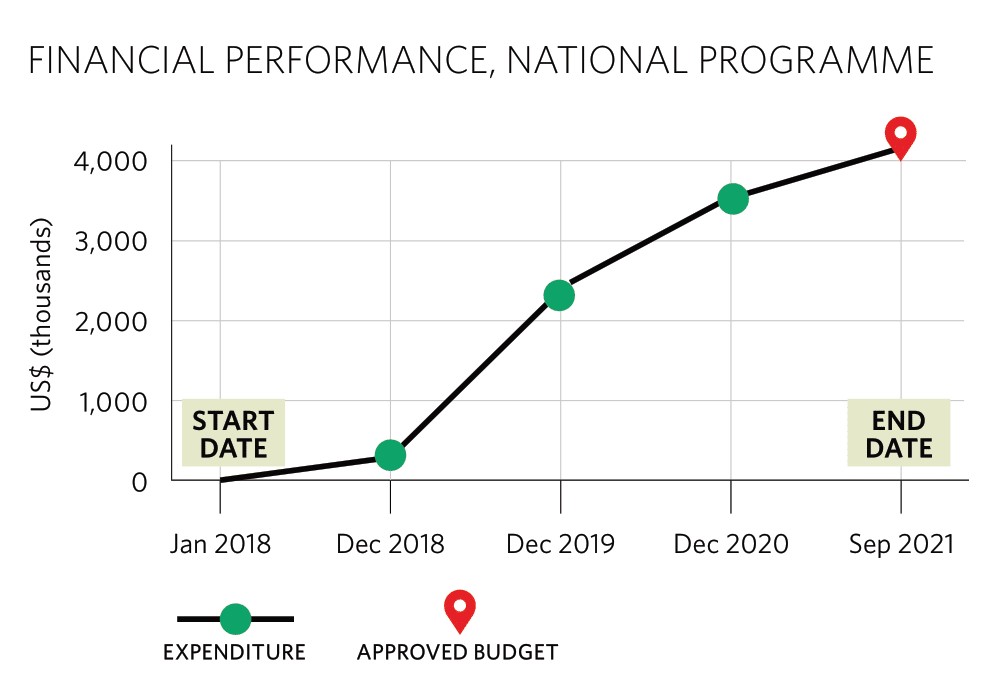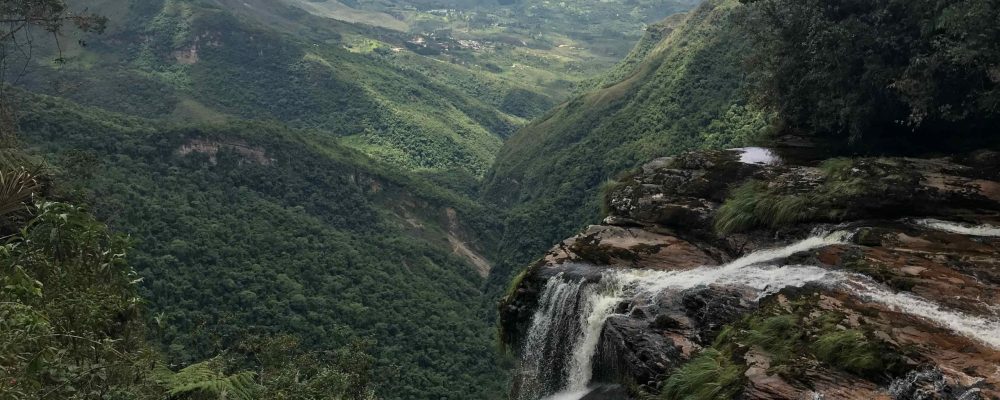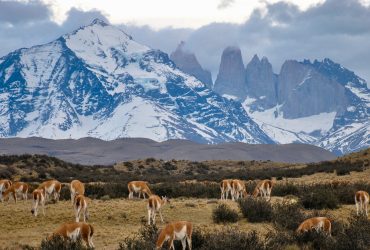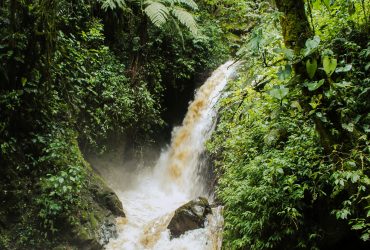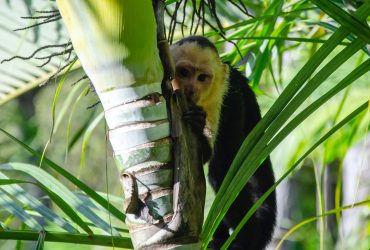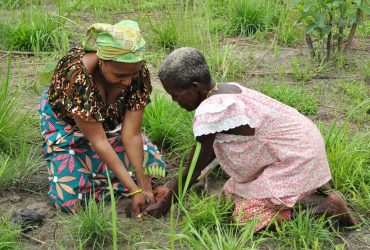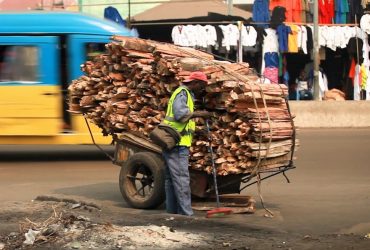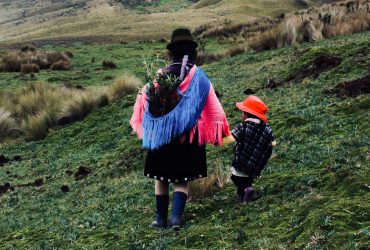PROGRESS AGAINST THE WARSAW FRAMEWORK
NS/AP: A monitoring framework with joint indicators was developed for Peru’s National REDD+ Strategy (Estrategia Nacional de Bosques y Cambio Climático, 2016) and the Joint Declaration of Intent between Norway, Germany, the UK and USA signed a new addendum
(more details in partnership section). MINAM released its guidelines to identify and classify REDD+ activities as a step to register and identify any REDD related activity developed in the country (link here).
FREL/FRL: Peru has advanced in developing a second FREL for the Amazon biome, including gross deforestation and using a different and enhanced methodology from the first FREL through a sampling grid using stratified area estimations. The new document was submitted to the UNFCCC in February, 2021. The submission contained details of the methodological approach fully supported by UN-REDD. The Technical Assessment Report (TAR) is expected to be published by the UNFCCC in April, 2022.
NFMS: Peru received training on the use of SEPAL and new imagery (Planet); both will be used to monitor and assess land use change dynamics in the Amazon biome. This is part of an effort that includes initiatives that focus on the development of institutionalized forest monitoring systems that enhance the quality of results. Further, legal recommendations concerning the institutionalization of the NFMS and the strengthening of measuring and reporting emissions reductions and implications for nesting were prepared and presented to MINAM for broader consultation.
SIS: Peru published its first summary of safeguards information in early 2020, covering the 2012-2019 period. Pilot versions of the Peru’s SIS, the Safeguards Information Module (MIS) and Citizen Attention Mechanism (MAC), which will complement safeguards monitoring through citizen participation, were developed and launched at the end of 2021. Peru intends to use the MIS to manage mitigation measures required for entry to voluntary carbon markets. These processes were informed by strong participation through the multi-stakeholder Safeguards Technical Sub-committee, which held regular meetings to review, discuss and provide inputs on, and validate, technical advances on safeguards. In addition, guidelines for the identification and classification of REDD+ actions were prepared, with safeguards compliance as an essential element.
These soon to be achieved milestones are the culmination of a long and robust process that involved civil society, regional governments, indigenous peoples, different sectors and academia. The Technical Sub-committee on Safeguards has reviewed and contributed to the documents and tools for the safeguards pillar.
REDD+ IMPLEMENTATION
The UN-REDD National Programme (NP) entered the closing phase in 2021.
The final assessment report concluded the NP, despite the difficulties generated by changes in government, the pandemic and unexpected technical needs, demonstrated resilience and proved efficient during project implementation. This, in part, was due to an adequate coordination process between the project team, MINAM and UN-REDD agencies, which formed a technical cadre that could adequately respond to dynamic and unexpected challenges, successfully concluding the Programme.
Forest solutions rewarded. The technical assistance provided in 2021 was included in the framework for Outcome 2 of the UN-REDD Results Framework. A gap analysis was conducted against the MRV and safeguard requirements as outlined in ART-TREES 2.0. The document is available and serves as a basis for assessing Peru’s feasibility and potential to generate ERs under the ART-TREES standard and for identifying actions to address gaps related to safeguards conformance during the TA 2022. A Concept Note was delivered to the ART Secretariat at the end of 2021, allowing for Peru to progress to the second stage – preparation of the TREES registration document.
CHALLENGES AND SOLUTIONS
As in 2020, the COVID-19 pandemic continued to have an impact on the provision of in-country technical assistance in 2021. Nevertheless, the country remained engaged with the activities of the NP and the TA 2021, and the Programme continued to use virtual means to deliver its support where feasible. Close coordination between UN-REDD agencies and MINAM was fundamental to conclude the activities planned for the UN-REDD National Programme and TA 2021.
Some of the challenges encountered and solutions identified are summarized below. The consolidation of the national forest monitoring system, aiming to have a robust, transparent and harmonized system, including subnational information, to monitor, report and demonstrate forest-based emission reductions according to UNFCCC provisions and international best practice can be challenging. A key element is to harmonize the methodologies used in the geobosques platform and the one used to report to the UNFCCC (GHGI, FREL, REDD tech annex). Resources from national budget need to be secured and continued support from donors will be needed to improve reporting on emissions/removals for generating reports to the UNFCCC. In the short term the UN-REDD TA will work to support this process and provide the necessary technical advice for Peru. The TA 2021 builds on previous UN-REDD National Programme support which has provided tools to institutionalize the NFMS of Peru.
Carbon accounting and avoiding double counting: many REDD projects are currently implemented across the country and Peru needs to develop a coherent accounting framework that puts environmental integrity to the forefront by avoiding double counting /issuance of ER. A solution identified is the nesting allocation tool, which will allocate baselines to projects based on the latest FREL by using deforestation risk assessment criteria. The baseline will be allocated by regions and any project aimed to generate and register ER will necessarily use the allocation tool for its corresponding region. The TA 2021 and UN-REDD NP, by supporting the FREL development and the nesting tool development along with other cooperation entities, have facilitated this process and are continuing the provision of technical support with the TA 2022. All these process have to be carried out in close participation with the affected stakeholders. MINAM has presented to the general public the REDD guidelines which contain the rulebook for assigning ER to the different initiatives and projects. By coordinating closely with these identified stakeholders, it will be ensured that the full participation of affected stakeholders is ensured.
There is also a challenge in ensuring that Peru’s Safeguards Information Module (MIS) and Citizen Attention Mechanism (MAC) are fully operational, particularly across different scales of REDD+ implementation. Further UN-REDD support will be needed to help pilot the MIS and the MAC at the regional levels, and to ensure that fully functioning and operational systems are in place, with protocols to collect, analyse, and periodically report information on safeguards to the UNFCCC, as well as different donors and funders and civil society, among others. Peru also aims to work on continuous improvements for the interpretation and conceptualization of the Cancun safeguards in the national context, as well as unifying safeguards reporting for interventions related to climate change and forests.
GENDER AND SOCIAL INCLUSION
To address the gender approach, the Gender and Climate Change Action Plan (PAGCC) was developed, which has a chapter related to priority gender actions in the areas of forests and climate change.
The Framework Law on Climate Change (LMCC) and its regulations have included a consultation process with indigenous peoples. The LMCC integrates the National Gender Equality Policy and the Gender and Climate Change Action Plan. The concept of comprehensive climate change management includes participatory, transparent and inclusive planning for the design, execution, monitoring, evaluation, reporting and dissemination of policies, strategies, plans, programmes and projects. These aim to reduce the vulnerability of a country against the effects of climate change, while reducing emissions and increasing GHG removals. Considering intercultural, gender and intergenerational approaches, they were developed under a multi-sector, multi-stakeholder and multi-level consultation process. Article 12 of the Law includes the obligation to respect and guarantee access to, and dissemination of, information on climate change. It also serves to guarantee spaces for citizen participation and indigenous or native peoples through their organizational representatives at the national, regional and local levels. This is carried out based on the principles and approaches established in Articles 2 and 3 of the LMCC, with a focus on gender, cultural and linguistic relevance, in accordance with current national and international regulations.
The pilot version of Peru’s MIS also included an approach to rights, gender equality and interculturality. In addition, the gap analysis conducted against ART-TREES 2.0 safeguards requirements analyzed specific gender elements, including the rights established by the Peruvian state to equality and non-discrimination based on gender
PARTNERSHIPS
In May, 2021 the Joint Declaration of Intent (JDI) addendum was signed between Peru, Norway, the UK and the USA. In this addendum, Norway restated its intention to contribute up to $45 million annually in the period 2022- 2025, subject to the delivery of verified reductions in Peru’s emissions from deforestation and forest degradation certified by the Architecture for REDD+ Transactions.
LINKAGES TO SDGS
Peru’s continued progress on implementing REDD+ actions contributes directly to SDGs 13 and 15 and indirectly to SDGs 5, 6, 8 and 12.
